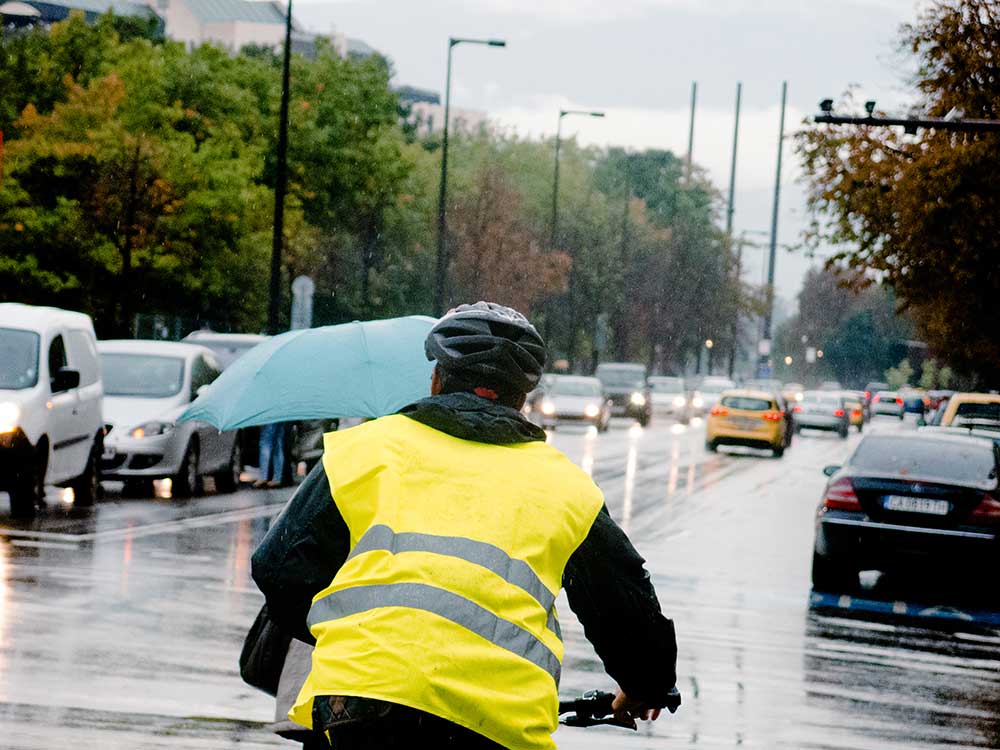Biking in winter weather: Lights on to be seen!
In many parts of the Northwest, commuters have the option of bicycling year-around. However, during these months of long nights and gray skies, you need to light your bike to see and be seen. Both Washington and Oregon law requires minimum levels of lighting, including a white light in front that’s visible from 500 feet and a red reflector visible from 600 feet in the back, even when visibility conditions are limited. However, veteran cyclists recommend more:
Wear reflective clothing.
Just as pedestrians benefit from brightly colored, reflective clothing, so do bicyclists. This video from Schwinn shows some simple options for reflective vests and leg bands.

Apply reflective tape to your bike frame and fenders.
We admit, we also kind of geeked out over these wheel lights from Brightz.
Think twice about strobes and other ultrahigh-intensity lights.
Quality, well-aimed lights are a must-have for wintertime bicycling. But as in cars (think about those bluish xenon gas lights), it’s possible to have too much of a good thing, at least if you’re the driver of an oncoming vehicle or bike. Riders with overzealous flashers also could run afoul of the law. In Washington, flashing lights are permitted only as taillights on bikes. (We were unable to find a reference for flashing lights on non-motorized vehicles in Oregon.) Our friends at REI offer a thoughtful discussion on lighting types, run times and mounting options for bicycle lights.
Share on social media